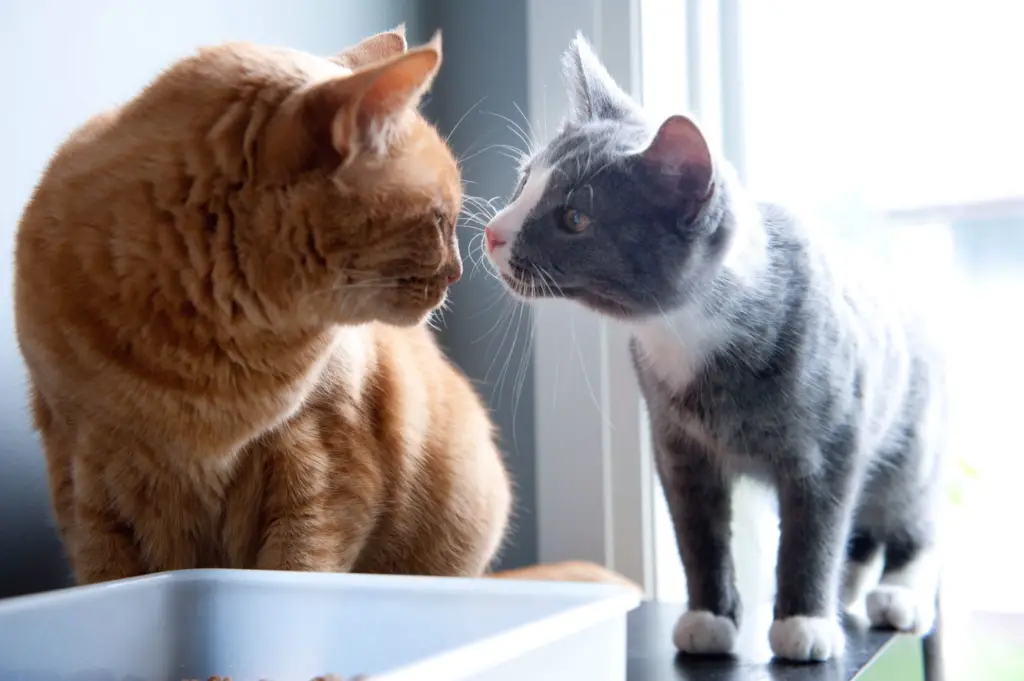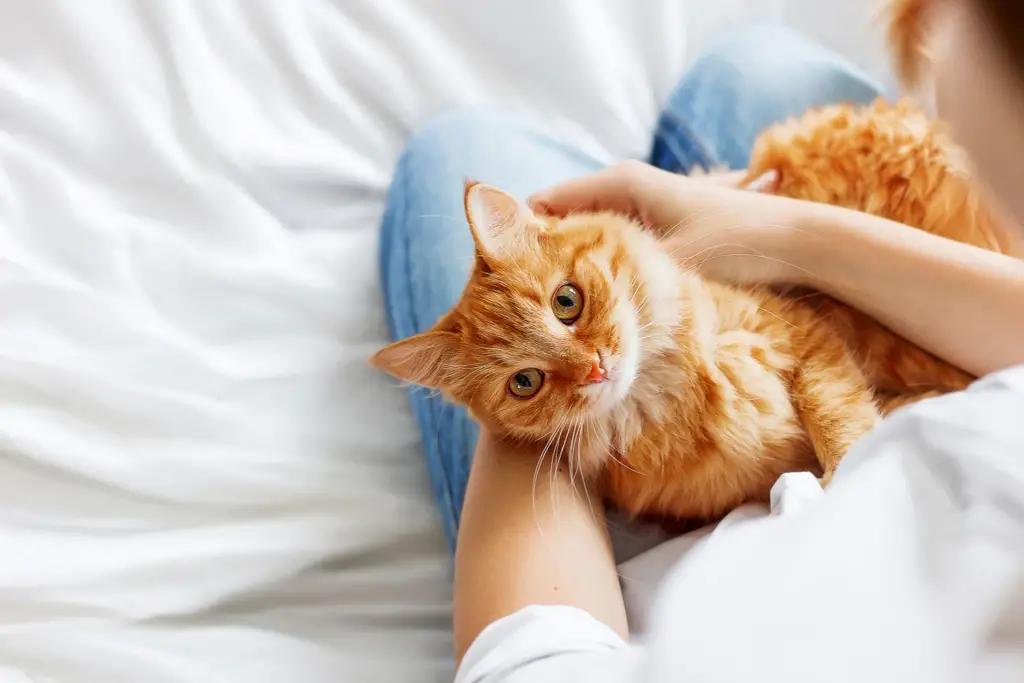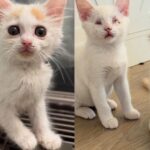Are you ready to embark on a feline adventure like no other? Get ready to unlock the secrets of cat care that will have your furry friends purring with delight!
Caring for different types of cats can be as diverse as their personalities. From the majestic Maine Coon to the mischievous Siamese, each breed requires its own special touch.
In this article, we’ll take you on a journey through the world of cat care, providing you with tips and tricks that will make you an expert in no time.
Want to keep those long-haired beauties looking their best? We’ve got grooming tips that will leave them feeling like royalty.
Is your active kitty always on the move? We’ve got feeding guidelines that will fuel their energy levels.
And for those independent breeds who seem impossible to train, fear not! Our training techniques are sure to impress even the most stubborn of cats.
So grab your catnip and get ready for a wild ride. It’s time to become a master in caring for all types of cats – because they deserve nothing but the best!
- Grooming Tips for Long-Haired Cats
- Feeding Guidelines for Active Breeds
- Exercise and Playtime for Energetic Cats
- Litter Box Maintenance for Indoor Cats
- Health Care Tips for Senior Cats
- Training Techniques for Independent Breeds
- Creating a Comfortable Environment for Shy Cats
- Frequently Asked Questions
- What are some common health issues that can affect long-haired cats?
- How much should I feed my active breed cat to maintain a healthy weight?
- Are there any specific toys or games that are recommended for energetic cats?
- How often should I clean the litter box for my indoor cat?
- What are some signs of aging or health concerns that I should watch out for in my senior cat?
- Conclusion
Grooming Tips for Long-Haired Cats
If you’ve ever wondered how to keep your long-haired cat looking fabulous without breaking a sweat, we’ve got some grooming tips just for you! Long-haired cat grooming is essential to prevent matting and keep their coat healthy and shiny. Regular brushing is crucial for these fluffy felines, as it helps remove loose hair and prevents tangles. Start by using a comb or brush specifically designed for long hair, such as a slicker brush or wide-toothed comb.
Be gentle yet thorough, paying special attention to areas prone to matting like the belly and tail. Remember to brush in the direction of hair growth to avoid causing discomfort. Additionally, consider using detangling sprays or conditioners to make brushing easier.
With these brushing techniques, you can ensure that your long-haired cat stays groomed and beautiful! Now let’s move on to feeding guidelines for active breeds.
Feeding Guidelines for Active Breeds
Feeding active cat breeds is like providing fuel for a high-performance sports car. These energetic felines require specific feeding schedules and portion control to keep them healthy and satisfied. Here are some guidelines to ensure your active breed gets the nutrition it needs:
- Stick to a consistent feeding schedule: Feed your cat at the same times each day to establish a routine.
- Use portion control: Active cats burn more calories, so it’s important not to overfeed them. Follow the recommended portion sizes on the food packaging or consult your vet for guidance.
- Choose high-quality, protein-rich food: Look for cat food that contains real meat as the primary ingredient, providing essential nutrients for muscle growth and maintenance.
- Consider interactive feeders: These can help stimulate your cat mentally and physically during mealtime, making it an engaging experience.
Proper nutrition is just one aspect of caring for active breeds. In addition to their diet, exercise and playtime are crucial in keeping these energetic cats happy and healthy without feeling deprived.
Exercise and Playtime for Energetic Cats
Ensure your energetic cat’s health and happiness by engaging in regular exercise and playtime. Energetic cats thrive on physical activity, so it’s important to provide them with opportunities to release their boundless energy.
Interactive toys are a fantastic way to keep your feline friend entertained while also providing mental stimulation. Toys that require problem-solving or hunting skills can help satisfy their natural instincts and prevent boredom. Try rotating toys regularly to keep things fresh and exciting for your cat.
In addition to interactive play, make sure to set aside dedicated time each day for play sessions with your energetic cat. Use toys that allow them to chase, pounce, and jump, encouraging them to get moving. This not only keeps them physically fit but also helps prevent obesity and related health issues.
Transitioning into the next section about ‘litter box maintenance for indoor cats,’ it’s crucial to establish a routine that ensures cleanliness and hygiene for both you and your feline companion.
Litter Box Maintenance for Indoor Cats
Maintaining a clean litter box is like providing a sanctuary for your indoor cat, creating an environment that promotes their physical and mental well-being. To ensure a clean litter box for your feline friend, follow these tips:
- Cleaning schedule: Scoop the litter box at least once a day to remove waste and clumps. Empty and replace the litter entirely every one to two weeks. Regular cleaning will prevent odors and keep your cat happy.
- Choosing the right litter: Cats have preferences when it comes to litter. Experiment with different types, such as clay, clumping, or natural alternatives like corn or walnut-based litters. Find one that suits your cat’s needs and encourages them to use the box consistently.
- Location matters: Place the litter box in a quiet and easily accessible area of your home. Avoid placing it near food bowls or noisy appliances as cats prefer privacy when doing their business.
By following these guidelines for maintaining a clean litter box, you’re providing your indoor cat with an essential component of their overall well-being.
Now let’s move on to health care tips for senior cats…
Health Care Tips for Senior Cats
As your beloved feline companion enters their golden years, it’s important to prioritize the well-being and health of your senior cat. Just like humans, senior cats have different nutritional needs compared to younger cats. It’s crucial to provide them with a balanced diet that is specifically formulated for senior cats. Look for cat food that contains high-quality protein and essential vitamins and minerals.
Additionally, consider adding supplements such as omega-3 fatty acids to support their joint health.
Exercise is also vital for senior cats to maintain their overall well-being. Although they may not be as active as before, regular exercise can help prevent weight gain and keep their muscles toned. Encourage gentle playtime activities such as interactive toys or short walks around the house.
Transitioning into the subsequent section about ‘training techniques for independent breeds,’ it’s important to remember that every cat is unique in their own way, including independent breeds.
Training Techniques for Independent Breeds

If you have an independent breed of cat, there are specific training techniques that can be effective in teaching them basic commands and addressing behavioral issues.
Positive reinforcement methods work well with these cats, using treats or praise to reward good behavior.
Teaching basic commands such as sit, stay, and come can help establish boundaries and improve communication with your cat.
And when it comes to addressing behavioral issues like aggression or excessive scratching, understanding the root cause and using positive reinforcement methods can be key in finding a solution.
Positive Reinforcement Methods
Are you wondering how you can effectively use positive reinforcement methods to train your cat?
Teaching tricks and using clicker training are great ways to reinforce positive behavior in your feline friend. Positive reinforcement involves rewarding your cat with treats, praise, or playtime whenever they exhibit the desired behavior.
When teaching tricks, start with simple commands like sitting or shaking hands before moving on to more complex ones. Clicker training is a technique that uses a clicking sound to mark the correct behavior, followed by a reward. This helps your cat associate the sound with positive actions and encourages them to repeat those behaviors in order to receive rewards.
By utilizing these positive reinforcement methods, you can create a strong bond with your cat and make training an enjoyable experience for both of you.
Now let’s transition into the next section about teaching basic commands…
Teaching Basic Commands
Let’s dive into the world of teaching your cat basic commands and watch as they become a well-trained feline superstar. Teaching tricks to your cat isn’t just fun, but it also stimulates their mind and strengthens the bond between you two.
One effective method is clicker training, where you use a clicker to mark desired behaviors and reward them with treats. Start by choosing a command, like ‘sit’ or ‘come,’ and associate it with a specific action. Use the clicker to signal when your cat performs the desired behavior correctly, followed by giving them a treat as positive reinforcement.
Be patient and consistent in your training sessions, keeping them short and rewarding small progressions gradually.
Now that your cat has mastered some basic commands, let’s address any behavioral issues they might have developed.
Addressing Behavioral Issues
Now that you’ve mastered teaching your cat basic commands, it’s time to tackle some common behavioral issues.
Managing aggression can be challenging, but with the right approach, you can help your feline friend become more calm and relaxed. Start by identifying the triggers that cause aggression and avoid them if possible.
Provide plenty of mental and physical stimulation through interactive play sessions and puzzle toys to redirect their energy in a positive way.
Additionally, dealing with excessive meowing requires understanding the underlying reasons behind it. It could be due to hunger, boredom, or even anxiety. Ensure that your cat’s nutritional needs are met, offer engaging toys and activities to keep them entertained, and create a consistent routine to alleviate any anxiety they may be experiencing.
By addressing these behavioral issues head-on, you will create a comfortable environment for shy cats without overwhelming them too much.
Creating a Comfortable Environment for Shy Cats

To make your shy cat feel more at ease, it’s essential to create a cozy and inviting environment. Here are some tips to help you build trust and socialize with your timid feline friend:
- Provide hiding spots: Shy cats often feel safer when they have a place to retreat to. Set up cozy hiding spots like covered beds or cardboard boxes where your cat can feel secure.
- Gradual introductions: When introducing your shy cat to new people or animals, take it slow. Allow them time to observe from a distance and gradually increase their exposure.
- Positive reinforcement: Reward your cat with treats or praise whenever they display positive behavior, such as approaching you or exploring new areas of the house. This will help build their confidence over time.
- Respect boundaries: It’s important not to force interactions with a shy cat. Give them space when they need it and let them come to you on their terms.
By implementing these techniques, you can create a comfortable environment that encourages your shy cat to come out of their shell and enjoy a happier, more social life.
Frequently Asked Questions
What are some common health issues that can affect long-haired cats?
Long-haired cats are prone to hairballs, which can cause digestive issues. Regular grooming is crucial for preventing hairballs; brush their fur daily and consider using a specialized diet or hairball remedy as recommended by your vet.
How much should I feed my active breed cat to maintain a healthy weight?
To maintain a healthy weight for your active breed cat, establish a feeding schedule and monitor portion sizes. Feed high-quality, balanced meals that meet their nutritional needs. Consult with your vet for personalized recommendations.
Are there any specific toys or games that are recommended for energetic cats?
To keep energetic cats entertained, recommended toys include interactive puzzles, feather wands, and laser pointers. These toys engage their hunting instincts and provide mental stimulation. Rotate the toys regularly to keep them interested and prevent boredom.
How often should I clean the litter box for my indoor cat?
To maintain a clean and odor-free environment, clean your indoor cat’s litter box at least once a day. Consider using litter box alternatives like self-cleaning boxes or litter mats to make the cleaning schedule more manageable.
What are some signs of aging or health concerns that I should watch out for in my senior cat?
As your senior cat gracefully enters their golden years, watch for signs of aging like decreased activity and weight loss. Provide a cozy environment with soft beds and warm blankets, and keep an eye out for dental problems that may arise.
Conclusion
In conclusion, taking care of different types of cats requires attention to their specific needs. By following the grooming tips for long-haired cats, you can keep their fur healthy and tangle-free.
Feeding guidelines for active breeds ensure they receive the necessary nutrients for their energy levels. Regular exercise and playtime are essential for keeping energetic cats happy and entertained.
Maintaining a clean litter box is crucial for indoor cats’ hygiene. As senior cats require special care, regular health check-ups are important to monitor their well-being.
Training techniques tailored to independent breeds help establish a strong bond between you and your feline friend. Lastly, creating a comfortable environment is vital for shy cats to feel safe and secure in their surroundings.
To provide a visual representation of these ideas, did you know that there are approximately 94 million pet cats in the United States alone? This staggering number highlights how important it is to understand the diverse needs of our feline companions and provide them with proper care.
By implementing the tips and tricks mentioned in this article, you can ensure that your cat leads a healthy and fulfilling life.
Read more:
What To Expect When Adopting A Cat: Tips And Advice For New Owners






























